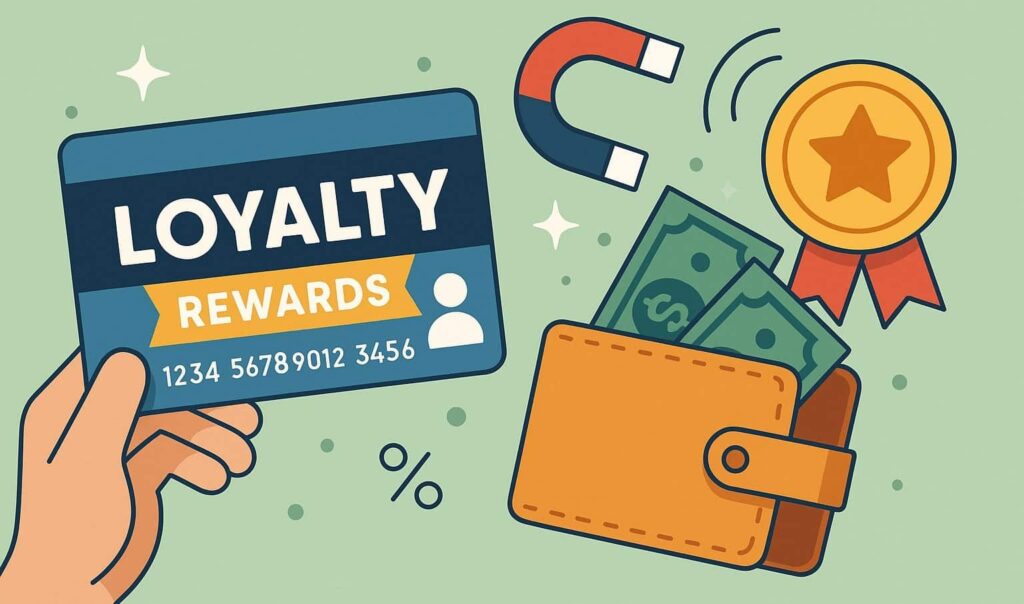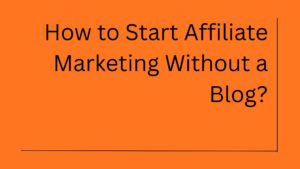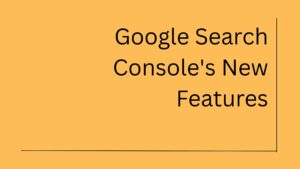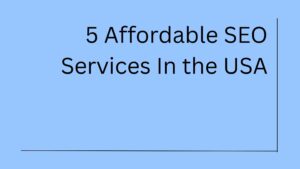You’ve probably got a wallet full of loyalty cards right now. Coffee shop punch cards, grocery store memberships, airline miles programs – they’re everywhere.
But here’s what’s interesting: these programs exist because they work incredibly well for businesses. Not just as nice gestures to customers, but as serious marketing strategies that drive real results.
Most business owners think loyalty programs are just about giving discounts or freebies. That’s missing the bigger picture completely.
The most successful companies use loyalty programs as sophisticated marketing engines that increase customer spending, gather valuable data, and turn occasional buyers into brand advocates who actively promote their business.
Maybe you’ve been wondering whether a loyalty program makes sense for your business. Or perhaps you’re curious about why so many companies invest heavily in these programs despite the obvious costs involved.
The answer lies in understanding how loyalty programs work as marketing tools, not just customer perks. When designed properly, they become one of the most cost-effective ways to grow your business sustainably.
Let’s explore why loyalty programs are such powerful marketing strategies and how they deliver results that other marketing tactics struggle to achieve.
Top Reasons Why Loyalty Programs Are a Great Marketing Strategy
They Transform One-Time Buyers Into Repeat Customers
Acquiring new customers costs five to seven times more than retaining existing ones. Yet most businesses spend the majority of their marketing budget chasing new prospects while ignoring the customers they already have.
Loyalty programs flip this equation by making it profitable and appealing for customers to come back repeatedly.
When someone makes their first purchase from your business, they’re testing the waters. They don’t know if they can trust your products, service, or brand yet. Many of these customers will never return unless you give them a compelling reason.
A well-designed loyalty program creates that reason by offering future benefits tied to continued engagement with your business.
Consider how Starbucks handles this challenge. Their loyalty program doesn’t just offer free drinks after a certain number of purchases. It creates a gamified experience where customers earn stars for every transaction, unlock different reward tiers, and receive personalized offers based on their preferences.
This system encourages customers to choose Starbucks over competitors even when other options might be more convenient or cheaper. The accumulated stars represent invested value that customers don’t want to lose by switching to a different coffee shop.
Your loyalty program can work similarly in any industry. Instead of hoping customers will remember your business when they need your products again, you’re creating tangible incentives that make returning feel rewarding rather than routine.
The key is designing rewards that feel valuable enough to influence purchasing decisions. A 2% cash back program might not motivate behavior changes, but exclusive access to new products, significant discounts on favorite items, or special member-only services can shift customer loyalty meaningfully.
Repeat customers also tend to spend more per transaction than new customers because they’re already familiar with your offerings and trust your business. They’re more likely to try additional products, upgrade to premium options, or make larger purchases.
They Increase Customer Lifetime Value Dramatically
Customer lifetime value (CLV) measures how much revenue a single customer generates throughout their entire relationship with your business. Increasing CLV is often the fastest way to grow revenue without increasing marketing costs.
Loyalty programs boost CLV through several mechanisms that compound over time.
First, they extend the length of customer relationships. Without a loyalty program, customers might make a few purchases and then drift away to competitors or simply forget about your business. Loyalty programs create ongoing touchpoints and reasons to stay engaged.
Second, they increase purchase frequency. When customers know they’re earning points, miles, or other rewards with each transaction, they consolidate more of their spending with your business instead of spreading it across multiple competitors.
Third, they encourage larger transaction sizes. Many loyalty programs offer bonus rewards for spending above certain thresholds, which motivates customers to add extra items to reach those levels.
Amazon Prime exemplifies this approach perfectly. Members pay an annual fee that makes them more likely to choose Amazon for purchases they might have made elsewhere. The free shipping benefit encourages larger orders to maximize value. The additional services like streaming video and music create multiple touchpoints that deepen the relationship.
Prime members spend significantly more per year than non-members, not just because they’re different types of customers, but because the program structure actively encourages increased spending.
Your loyalty program can create similar dynamics by designing reward structures that incentivize the behaviors you want to see more of. If you want larger average order values, offer bonus points for purchases above certain amounts. If you want more frequent purchases, provide time-sensitive rewards that expire if not used.
The compounding effect becomes powerful over time. A customer who might have spent $200 per year without a loyalty program could easily spend $400-600 annually when motivated by rewards, exclusive access, and the psychological investment they’ve made in your program.
They Provide Invaluable Customer Data and Insights
Every interaction with your loyalty program generates data that helps you understand customer behavior, preferences, and purchasing patterns in ways that anonymous transactions never could.
When customers join your program, you typically collect basic demographic information. As they make purchases and engage with rewards, you build detailed profiles of what they buy, when they buy it, how much they spend, and what motivates their decisions.
This data becomes incredibly valuable for improving your marketing effectiveness across all channels.
You can identify your most valuable customer segments and create targeted campaigns that speak directly to their interests and behaviors. Instead of sending generic promotions to everyone, you can personalize offers based on individual purchase history and preferences.
You can also spot trends and patterns that inform inventory decisions, product development, and pricing strategies. If loyalty program data shows that certain customer segments consistently purchase specific combinations of products, you can create bundles or cross-selling campaigns that increase average order values.
Timing insights help you understand when different customers are most likely to make purchases, allowing you to schedule marketing campaigns and promotional offers for maximum impact.
Geographic data from your loyalty program can reveal opportunities for new locations, regional preferences, or local marketing initiatives.
Perhaps most importantly, you can identify customers who are at risk of churning before they actually leave. Decreasing purchase frequency, longer gaps between transactions, or reduced engagement with program benefits can signal that someone is drifting away from your business.
With this early warning system, you can proactively reach out with special offers, personalized attention, or solutions to whatever problems might be causing their disengagement.
This level of customer intelligence is nearly impossible to obtain through other marketing channels. Social media advertising and search marketing provide broad demographic data, but loyalty programs give you detailed behavioral insights about your actual customers.
They Generate Powerful Word-of-Mouth Marketing
Satisfied loyalty program members often become your most effective marketers, promoting your business to friends, family, and colleagues without any additional cost to you.
This happens for several psychological and practical reasons.
When people feel like they’re getting special treatment or exclusive access through your loyalty program, they want to share that positive experience with others. It makes them feel knowledgeable and helpful to recommend a business that treats customers well.
Many loyalty programs include referral components that directly incentivize word-of-mouth marketing. Members earn bonus points, discounts, or other rewards when they successfully refer new customers to join the program.
But even without explicit referral rewards, loyalty program members tend to recommend businesses more frequently than regular customers because they have a deeper relationship and investment in the brand’s success.
Social proof plays a role, too. When someone is actively participating in your loyalty program, they’re more likely to mention your business in social media posts, online reviews, and casual conversations because it’s a more significant part of their routine.
The exclusive nature of many loyalty programs also creates a sense of belonging to a special group that members want to share with people they care about.
Consider how people talk about their favorite airline’s frequent flyer program or their preferred hotel chain’s rewards system. They don’t just mention using these services – they actively recommend the programs to others and explain the benefits in detail.
This word-of-mouth marketing is particularly valuable because it comes from trusted sources rather than paid advertising. People are much more likely to try a business based on a personal recommendation from someone they know, especially when that person can explain specific benefits they’ve experienced.
The viral effect compounds over time as satisfied loyalty members continue bringing in new customers who then become loyalty members themselves and start referring others.
They Create Emotional Connections Beyond Transactions
Successful loyalty programs tap into psychological principles that create emotional attachment to your brand, transforming purely transactional relationships into something more meaningful.
The principle of reciprocity plays a major role here. When you provide rewards, exclusive access, or special treatment to customers, they feel obligated to continue supporting your business in return.
Loss aversion makes accumulated rewards feel valuable even when they might not represent significant monetary value. Customers don’t want to “lose” the points, status, or benefits they’ve earned by switching to a competitor.
The endowed progress effect makes people more likely to complete goals when they feel like they’ve already made some progress toward them. Loyalty programs that give members a head start or show progress toward rewards tap into this psychological bias.
Gamification elements like tiers, badges, challenges, and leaderboards can make interacting with your business feel more engaging and fun than purely functional transactions.
Exclusive access to products, events, or services makes loyalty members feel special and valued in ways that go beyond the monetary value of the benefits.
Personalized communication and offers show that you understand and care about individual customer preferences, creating a sense of personal relationship rather than anonymous commerce.
These emotional connections become competitive advantages that are difficult for other businesses to replicate. Even if competitors offer similar products at lower prices, customers with strong emotional attachments to your loyalty program are less likely to switch.
The psychological investment customers make in your program – time spent earning rewards, emotional attachment to their status level, anticipation of future benefits – creates switching costs that have nothing to do with money.
Loyalty Programs Provide Competitive Advantages That Last
Once customers are actively engaged in your loyalty program, they become much less sensitive to competitive offers and price differences.
The switching costs created by loyalty programs aren’t just financial – they’re psychological and practical too.
Customers would need to start over at the bottom of a new loyalty program, losing all the progress and benefits they’ve accumulated with your business. Even if a competitor offers better prices or products, the perceived loss of giving up existing rewards often outweighs the potential benefits of switching.
This protection becomes especially valuable in highly competitive industries where businesses are constantly trying to steal customers from each other with promotional offers and aggressive pricing.
Your loyalty program also gives you flexibility in pricing and promotional strategies that businesses without programs don’t have. You can offer exclusive discounts to loyalty members while maintaining regular prices for everyone else, effectively segmenting your market and protecting profit margins.
You can test new products, services, or pricing models with loyal customers who are more likely to give you the benefit of the doubt and provide honest feedback.
During economic downturns or competitive price wars, loyalty program members are typically more resistant to switching because of their investment in your program and the ongoing value they receive.
The data advantages we discussed earlier also create competitive moats. The better you understand your customers through loyalty program insights, the more effectively you can serve them and the harder it becomes for competitors to replicate your customer experience.
They Enable Predictable Revenue and Growth
Loyalty programs create more predictable business performance by identifying and reducing business churn and increasing the reliability of repeat purchases.
When you know that a significant percentage of your customers are actively engaged in your loyalty program, you can forecast future revenue more accurately based on historical purchasing patterns and program engagement metrics.
This predictability helps with inventory planning, staffing decisions, and financial planning in ways that businesses dependent on constantly acquiring new customers struggle to achieve.
You can also create revenue spikes by strategically timing loyalty program promotions and bonus reward periods during slower business periods or when you need to hit specific sales targets.
The recurring nature of loyalty program engagement creates natural opportunities for upselling and cross-selling that don’t feel pushy or sales-driven. When customers are already interacting with your program, introducing new products or services feels like helpful information rather than unwanted advertising.
Many loyalty programs also generate direct revenue through membership fees, premium tiers, or partnerships with other businesses that pay for access to your member base.
The customer lifetime value improvements we discussed earlier compound over time, creating sustainable growth that doesn’t require constantly increasing marketing spend to acquire new customers.
Making Loyalty Programs Work as Marketing Strategy
Understanding why loyalty programs are effective marketing strategies is just the first step. The real challenge is designing and implementing a program that delivers these benefits for your specific business and customer base.
The most successful programs align closely with customer motivations and business objectives rather than simply copying what other companies are doing.
You need to understand what your customers actually value – is it discounts, exclusive access, convenience, status, or something else entirely? The rewards and structure of your program should match these preferences.
Your program should also support your broader business goals. If you want to increase average order values, design rewards that encourage larger purchases. If you want to improve customer data collection, create incentives for customers to share more information about themselves.
Technology and execution matter tremendously. A loyalty program that’s difficult to use, hard to understand, or unreliable will frustrate customers rather than delight them.
Most importantly, your program needs to provide genuine value that customers can’t get elsewhere. Weak programs that offer minimal benefits won’t change customer behavior or create the marketing advantages we’ve discussed.
When done well, loyalty programs become self-reinforcing marketing systems that attract new customers, retain existing ones, and generate valuable data that improves all your other marketing efforts.
The businesses that understand and leverage these strategic benefits are the ones that build lasting competitive advantages and sustainable growth. Your loyalty program can become one of your most powerful marketing tools when you approach it as a comprehensive strategy rather than just a customer perk.
The Bottom Line: Loyalty Programs as Strategic Market Assets
Loyalty programs aren’t just nice-to-have perks for customers anymore. They’ve evolved into essential marketing infrastructure that smart businesses use to build sustainable competitive advantages.
The evidence is clear across every industry. Companies with well-designed loyalty programs consistently outperform competitors in customer retention, lifetime value, and profitable growth. They have better customer data, more predictable revenue, and stronger emotional connections with their audience.
But here’s what many businesses still get wrong – they think loyalty programs are about rewarding past behavior when they’re actually about influencing future decisions. The most effective programs create ongoing reasons for customers to choose you over alternatives, again and again.
Your loyalty program should feel less like a discount club and more like membership in an exclusive community that provides real value. When customers feel like they’re getting something special that they can’t find elsewhere, switching to competitors becomes much less appealing.
The businesses that are winning with loyalty programs understand this fundamental shift. They’re not just giving away points or offering percentage discounts. They’re creating experiences, building relationships, and gathering insights that fuel smarter marketing decisions across every channel.
The question isn’t whether loyalty programs work as marketing strategies – the data proves they do when implemented thoughtfully. The question is whether you’re ready to invest in building a program that becomes a strategic asset rather than just another expense.
Your customers are already participating in loyalty programs from your competitors. Every day you wait is another day they’re building stronger relationships elsewhere and becoming less likely to choose your business when they need what you offer.
The opportunity is sitting right in front of you. Your existing customers are the foundation for sustainable growth, but only if you give them compelling reasons to keep coming back and spending more with each visit.
What kind of loyalty program will you build to turn that opportunity into reality?

The Chief Author and Editor at Intothecommerce. As a seasoned expert in digital marketing, I direct the site’s strategic content and ensure every piece meets the highest industry standards. My insights drive our coverage on SEO, paid media, and cutting-edge marketing technology.






1 thought on “Why are Loyalty Programs an Effective Marketing Strategy? – An Ultimate Guide”
This article gave me so many ideas about how to use the right loyalty program at the right time! I’m planning to try some of these strategies in my own business.